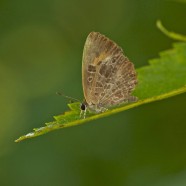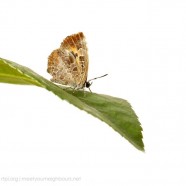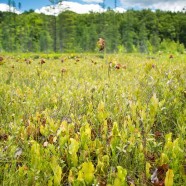Humped Bladderwort (Utricularia macrorhiza)
Gorgeous above the water surface, deadly below it – the Humped Bladderwort (Utricularia macrorhiza), and other bladderworts, use small submerged vesicles – bladders – to trap and digest small aquatic invertebrates to augment their nutrient intake in the wetlands they occupy. These are among the very few carnivorous plants found in the northeastern United States. Photographed by RTPI President Twan Leenders for the Roger Tory Peterson Institute of Natural History and the Meet Your Neighbours global biodiversity project.
Read MoreHarvester Butterfly
Here is a shot of the Harvester (Feniseca tarquinius) butterfly in its natural habitat, the world around it is as green as can be. Get out in that hot air today and dig up some treasures for yourself! Photographed by RTPI Affiliate Sean Graesser in Connecticut while on assignment for the Roger Tory Peterson Institute of Natural History.
Read MoreHarvester (Feniseca tarquinius)
It might not look like an unusual butterfly, but the Harvester (Feniseca tarquinius) is North America’s only carnivorous butterfly. That’s right, flying around in our very own woodlands is a carnivorous butterfly! Its larval stage feeds on aphids usually found on Alder trees instead of a host plant. The adults will eat the honey dew excreted by aphids or tree-hoppers. These butterflies can be very difficult to find, usually only discovered while resting on the ends of leaves during territorial and mating disputes. Photographed by RTPI Affiliate Sean Graesser for the Meet Your...
Read MorePurple Pitcher Plant (Sarracenia purpurea)
Seas of Sarracenia – or Purple Pitcher Plant (Sarracenia purpurea) in nearby Cattaraugus Co. A beautiful bog surveyed recently by RTPI staff to assess our region’s natural areas and biodiversity. With the staggering density of carnivorous plants here you’d expect there to be few bugs around. Alas! In fact, specific mosquito species actually breed in the water-filled Sarracenia pitchers without being digested. Although I’m not a big fan of mosquitoes, I have to admit that that is pretty cool!
Read More







